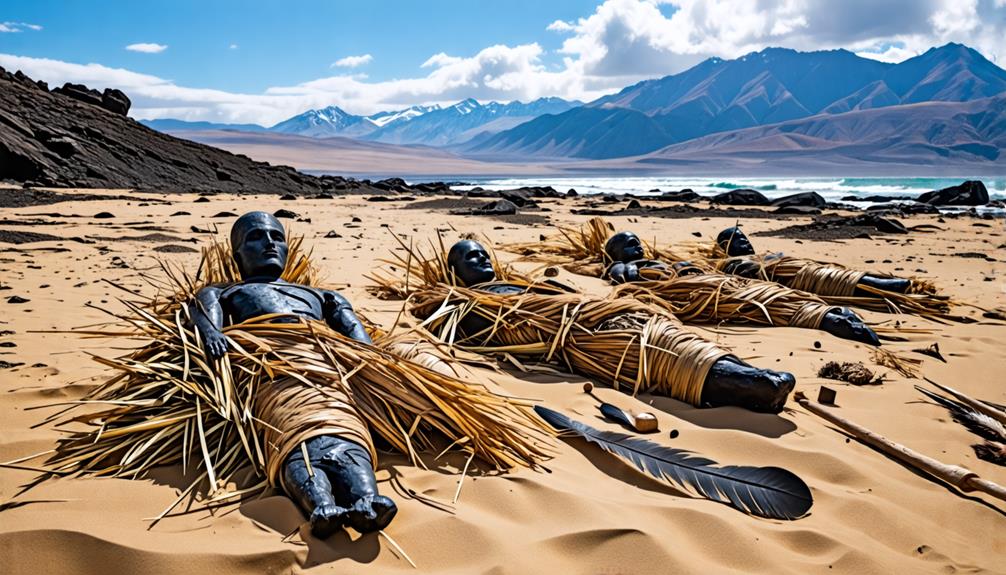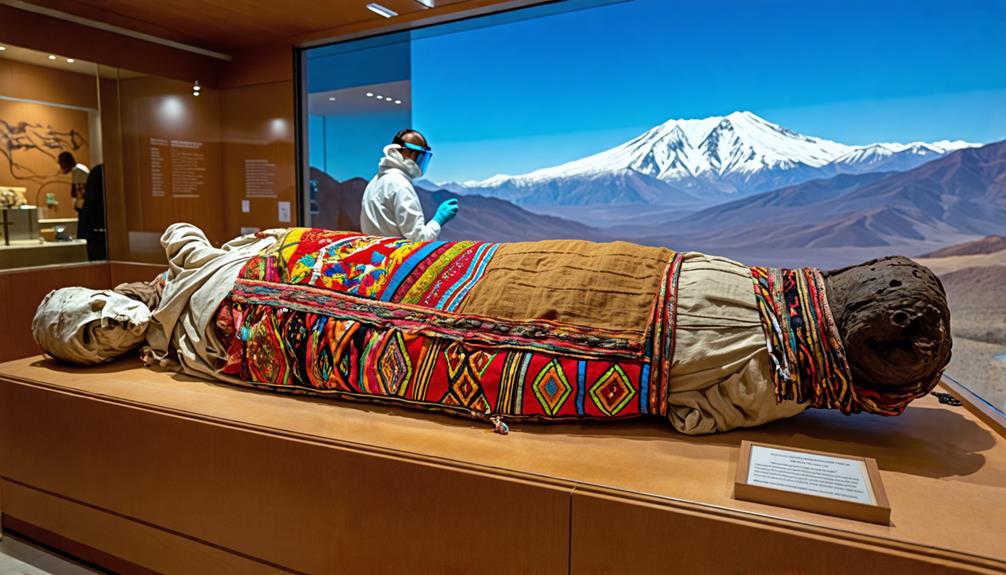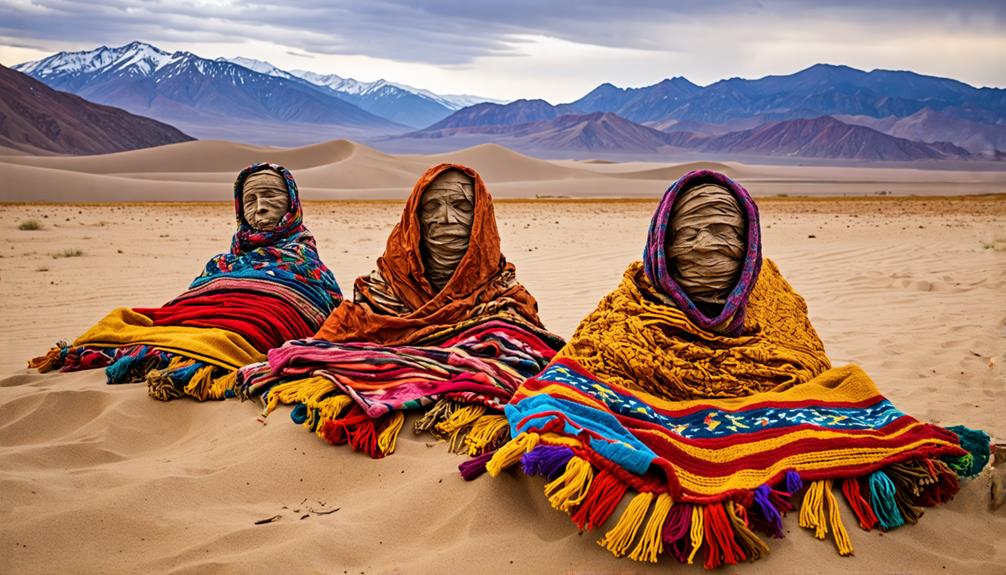You might think of Egypt when mummies come to mind, but did you know the world's oldest mummies are actually in Chile? The Chinchorro mummies, dating back to 5,000 BC, are a reflection of ancient South American ingenuity and cultural practices. These remarkable remains have survived for thousands of years in Chile's Atacama Desert, but they're now facing a new threat: climate change. As you consider the implications of this discovery and the challenges it faces, you'll find there's much more to uncover about these ancient ancestors and the efforts to preserve their legacy for future generations.
Key Takeaways
- The Chinchorro mummies in Chile date back to 5,000 BC, predating Egyptian mummies by over 2,000 years.
- Discovered in Chile's Atacama Desert, these mummies are recognized as the oldest in the world.
- Chinchorro mummification techniques involved organ removal, body desiccation, and use of natural preservatives.
- The practice included creating 'red mummies' for infants and fetuses, demonstrating cultural importance of early life.
Ancient Chinchorro Mummification Practices

The Chinchorro's mummification techniques, dating back to 5,000 BC, predate Egypt's by over two millennia and showcase a complex understanding of preservation and cultural reverence for death. These ancient Chinchorro practices, developed in Chile's Atacama desert, produced the world's oldest mummies. Their methods involved removing internal organs, desiccating bodies, and using natural preservatives like ash and sea lion skins.
Uniquely, the Chinchorro created 'red mummies,' where infants and fetuses were shaped and covered with red ochre pigment. This practice reflects their cultural emphasis on early life.
The mummification process also included reshaping bodies, filling heads with materials like ashes, and applying clay masks. These techniques demonstrate advanced anatomical knowledge.
As cultural artifacts, Chinchorro mummies provide invaluable insights into ancient funerary practices and social structures, highlighting their distinct relationship with death and the afterlife.
Climate Threats to Preservation
Climate change poses an existential threat to the world's oldest mummies, as rising humidity levels in Chile's Atacama Desert accelerate their deterioration. The Chinchorro mummies, once preserved by the region's arid conditions, are now facing rapid decay.
You can imagine the devastating effects:
- Melting skin on ancient remains
- Collagen attacked by microorganisms
- Mold and dry rot spreading in museums
- Insect infestations damaging fragile artifacts
Increased rainfall frequency and stronger El Niño currents are exposing burial sites more often, putting these archaeological treasures at risk.
The unique environmental conditions that once protected these mummies are changing rapidly, demanding urgent adaptive strategies for heritage conservation.
Preservationists face a race against time as climate change threatens to erase these irreplaceable pieces of human history. Without immediate action, the world's oldest mummies may soon be lost forever.
UNESCO's Role in Conservation

Recognizing the urgent need for conservation, UNESCO designated the Chinchorro mummies as a World Heritage site in July 2021, marking a significant moment in efforts to protect these ancient treasures. This UNESCO status for the world's oldest mummies not only raises global awareness of the Chinchorro culture but also drives cultural tourism in Arica and Parinacota.
You'll find that this recognition secures essential funding for preservation efforts, helping safeguard these archaeological wonders against environmental threats.
UNESCO's involvement goes beyond mere recognition. It's actively collaborating with local authorities to implement adaptive strategies for conserving the mummies. These efforts are particularly important in the face of climate change impacts on the Atacama Desert.
Conclusion
You've discovered an incredible piece of human history in Chile's Atacama Desert.
These ancient Chinchorro mummies, predating their Egyptian counterparts by millennia, offer unique insights into early human practices.
But they're under threat from climate change. You can't ignore the urgency of preserving these priceless artifacts.
Thanks to UNESCO's intervention, there's hope for their conservation.
It's up to you to support and raise awareness about these remarkable relics of our shared past.

Leave a Reply